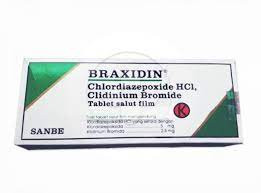Other Brands/Names
Ultibro Breezhaler, Seebri Breezhaler, Enerzair Breezhaler
Mechanism of Action
Glycopyrronium is a pharmacological agent with anticholinergic effects that functions as a bronchodilator. It is primarily prescribed for the management of symptoms associated with chronic obstructive pulmonary disease (COPD), including coughing, wheezing, and dyspnea. Anticholinergics are a pharmacological category of medications that can be used to treat a range of medical conditions that impact the process of muscle contraction and relaxation.
In chronic obstructive pulmonary disease (COPD), the bronchial muscles experience contraction, resulting in the constriction of the airways and subsequently leading to respiratory difficulties. This medication inhibits the contraction of the muscles around the airways, allowing the entry and exit of air from the lungs. This medication has the ability to inhibit the impact of acetylcholine on the respiratory muscles, resulting in relaxation and enlargement of the respiratory tract. By maintaining better air movement, it is possible to reduce complaints.
Indications
Glycopyrronium is used as a bronchodilator to expand the bronchi's surface area in the lungs. It is used to relieve symptoms and decrease exacerbations in patients with moderate-to-severe chronic obstructive pulmonary disease (COPD). This medication is primarily taken for symptom management and prevention of relapse, rather than for the treatment of sudden episodes of dyspnea.
Contraindications
Patients with the following conditions should not be taking this medication:
- Patients with a previous record of allergy or hypersensitivity to glycopyrronium
- Children under the age of 18
- Glaucoma
- Prostate gland hypertrophy
- Gastric obstruction
- Myasthenia gravis
- Patients with hereditary problems, such as galactose intolerance, Lapp lactase deficiency, or glucose-galactose malabsorption
Side Effects
The use of Glycopyrronium may result in the following side effects:
- Stomachache
- Diarrhea
- Constipation
- Insomnia
- Nauseous
- Flushing, which is characterized by a sensation of warmth in the face, neck, or chest
- Joint pain or back pain
- Dry mouth
- Headache
- Cough
- Sore throat
Preparations
Glycopyrronium dosage forms include:
- Injection solution (0.2 mg/mL; preservative-free 0.2 mg/mL)
- Syrup (1 mg/5 mL)
- Tablets ( 1 mg; 1.5 mg; 2 mg)
- Orally disintegrating tablets (1.7 mg)
However, in Indonesia glycopyrronium is only available in inhaler powder form (50 mg).
Dosage
The recommended dosage of glycopyrronium in inhaler form for adults is 1 inhalation per day, which is similar to 50 micrograms (mcg) of glycopyrronium. Glycopyrronium, when taken daily, effectively relieves symptoms associated with respiratory tract constriction caused by COPD.
It is advised to dose glycopyrronium at a consistent time every day. In the event of a missed dose, it is advisable to take the next dose promptly. Patients must be advised against exceeding a single dose per day.
Safety of Drugs
Pregnancy:
The FDA has classified glycopyrronium in inhalation preparations (inhalers) as Category C, indicating a potential risk of causing pregnancy problems. Therefore, category C medications should only be considered if the advantages for both the mother and fetus outweigh the potential concerns they may provide.
Drug Interactions
Glycopyrronium may induce the following drug interactions when administered concurrently with other medications:
- There is a higher risk of severe and perhaps deadly adverse effects when this medication is taken in combination with other anticholinergic medicines, such as ipratropium or tiotropium.
- If combined with halothane gas, there is an elevated risk of cardiac rhythm irregularities.
- Combination usage with β-adrenergic blocker medications, anticholinergics, MAOIs, TCAs, and medicines known to prolong the QT interval is contraindicated.
- Elevated intraocular pressure when combined with corticosteroids.
- There is a higher chance of experiencing hyperthermia if this medication is taken together with zonisamide or topiramate.
Looking for more information about other medications? Click here!
- dr. Alvidiani Agustina Damanik
Badan Pengawas Obat dan Makanan RI. Glycopyrronium. Retrieved 20 July 2024, from: https://registrasiobat.pom.go.id/files/assesment-reports/6739529961688541906.pdf
U.S. National Library of Medicine. National Institute of Health MedlinePlus. Glycopyrrolate Oral Inhalation. Retrieved 20 July 2024, from: https://medlineplus.gov/druginfo/meds/a618016.html
U.S. National Library of Medicine National Center for Biotechnology Information. Glycopyrrolate - C19H28BrNO3. Retrieved 21 July 2024, from https://pubchem.ncbi.nlm.nih.gov/compound/Glycopyrrolate
National Center for Biotechnology Information. Inhaled glycopyrronium bromide: a review of its use in patients with moderate to severe chronic obstructive pulmonary disease. Retrieved 22 July 2024, from https://www.ncbi.nlm.nih.gov/pubmed/23677802

/669df15fa3628.jpg)

/inhaler.jpg)








